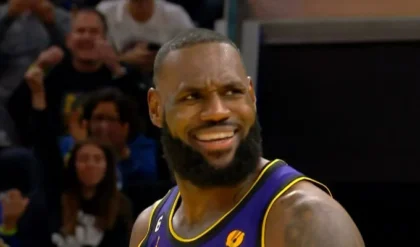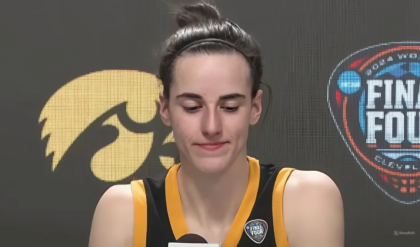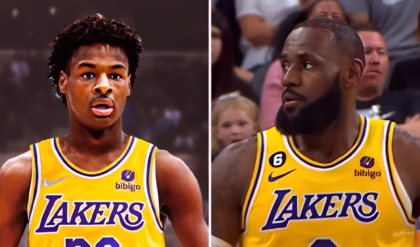The WNBA is poised for growth and will soon extend its reach to Iowa, marking the establishment of our inaugural professional franchise. Last weekend marked the commencement of the WNBA season, drawing considerable attention, arguably more than any other season since its inception in 1997.

Much of this attention can be attributed to Caitlin Clark, the standout player from Iowa Hawkeyes, who shattered numerous records and claimed nearly every individual accolade en route to her professional debut. Clark, selected as the top pick by the Indiana Fever in April, joins the ranks of the WNBA, which currently comprises 12 teams, an expansion from the original eight. However, compared to its male counterpart, the NBA, boasting 30 teams, the WNBA remains relatively modest in size.
Despite yet to match NBA ratings, WNBA viewership has surged by 21% for the 2023 season compared to the previous year-an encouraging trend. The WNBA draft alone garnered significant attention, attracting 2.4 million viewers this year, a remarkable 300% increase, hinting at the potential for further rating milestones this season.
Given these promising indicators, expanding the WNBA at this juncture appears not only viable but sensible. WNBA Commissioner Cathy Engelbert herself has expressed a desire for league expansion, reiterating the call to increase the number of teams to 16 by 2028.
With that, I ask: Why not put one of those teams in lowa?

lowa is not on Engelbert’s expansion radar. And people might not think that lowa’s population could “support” a team (AKA, make WNBA cruise operators a lot of money). After all, that’s why no other major professional league has had a chance to meet lowa in recent memory.But I have three good reasons (and a fourth, yes) why lowa is a great place to host a WNBA team:
The WNBA will not have a premier league
For one glorious year in 1949, lowa had a real NBA team: the Waterloo Hawks (we’re not counting the Tri-Cities Blackhawks because they play on the Illinois side of the present-day Quad Cities). While we lost that, there was the NBA G League lowa Wolves, who gained quite a fan base at Wells Fargo Arena.
But while the G League still has up-and-coming players and great basketball, I don’t think anyone would argue that it’s the same as watching an NBA or WNBA game-that is, watching top-level players tallest. sport. Because of our
population stagnant at best-it’s unlikely the NBA or any of the Big Four will move to lowa anytime soon.
Oddly enough, that’s one argument for fielding a WNBA team: If no other league attracts their top talent, the WNBA will corner the market.
Of course, if our only argument was that it was our only professional team, that wouldn’t work. I mean, does lowa’s population *really* support a WNBA team? Yes, definitely, because….

lowa has loved women’s basketball for a century
lowa is truly a testing ground for women’s basketball. Before girls basketball lost popularity anywhere else—indeed, before girls were allowed to play sports anywhere else high school girls played 6-on-6 basketball all over lowa started in 1920. And it was incredibly successful. Crowds gathered in high school gyms to watch them compete. The state tournament (seat capacity 15,000) is often sold out.
One of the dominant players from lowa (Denise Long of Union-Whitten) became the first woman drafted into the NBA (San Francisco Warriors) in 1969 before college opportunities were available to women. (The NBA declined the draft pick, but the Warriors started a non-paying league with Long, where women’s teams would compete as openers for NBA games.)
Bottom line: lowa has a long tradition of supporting women’s basketball and has many players and fans who are passionate about the sport. We are not new fans, nor are we fair weather fans. And, when given the chance to see greatness, we still throw money at it….

lowa has the No. 1 (and 18th) draft pick
Professional sports leagues would be nothing without their stars. And the brightest person right now is Caitlin Clark, the pride of lowa.
With her logo 3s, no-look assists and deft defense, she has been exciting to watch her entire collegiate career. And lowans have sold Carver-Hawkeye Arena tickets for the past two years, as well as many arenas across the country where the Hawkeyes play, to see that greatness.
Losing Clark to Indiana hasn’t dampened any enthusiasm here: Fever tickets are now the most expensive ticket in the league. Teams outside of Indiana have made plans to move their games to bigger arenas to accommodate the crowds.
And, if No. 18 draftee and former Hawkeye Kate Martin actually makes the Las Vegas Aces 12-woman roster, I’d be willing to bet those direct-to-Las-Vegas Southwest or Allegiant flights start filling up, too. (Don’t forget a former Hawkeye, Megan Gustafson, is also on the Aces.)
It’s called the Caitlin Clark effect. But it proved one thing: lowans respect-and will throw money at-greatness. And speaking of throwing money….
Des Moines would probably pony up the taxpayer cashThis one’s my most ick argument, but:
Given that Des Moines and Polk County taxpayers are already on the hook for many millions of dollars for a USL soccer stadium (again, a second-tier pro league), it’s fair to say the same (or perhaps better) deal would be on offer for a top-tier WNBA team.
Look, I’m not a fan of billionaire owners asking us for our hard-earned money, either. However, I am willing to bet lowa taxpayers would (if begrudgingly) accept this for its first pro team (and certainly, any city would). And that’s not nothing in an era when voters in larger US cities are starting to question the value of public financing of a new stadium, particularly when they already field several other professional teams.

Give us a chance!
Women’s sports is having a moment, and all of the expansion cities make sense on paper.
But lowa, unique among other possible expansion cities, has a century-long tradition of support, a built-in fanbase that has proved willing to support, and the desire to show up and throw tons of money at high school and collegiate women’s basketball players.





